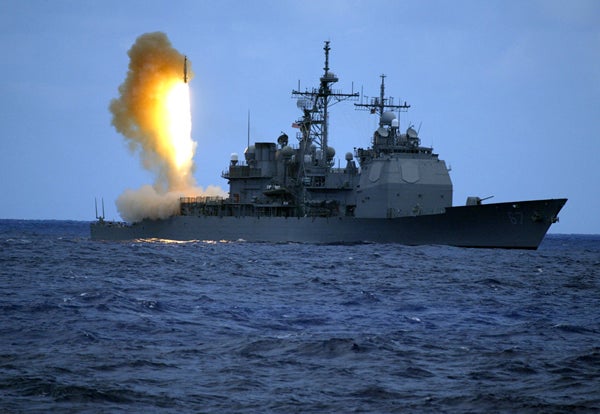Raytheon’s Standard Missile-3 (SM-3) program recently marked its 26th overall successful medium-range missile intercept—the fifth successful test of the next generation SM-3 Block IB. The ballistic missile threat is real and expanding, which is why the U.S. should increase its naval and missile defense capabilities.
The test used Lockheed Martin’s second-generation Aegis sea-based ballistic missile defense system to locate, track, and intercept an intermediate-range missile at a high altitude. The SM-3 Block IB is meant to protect the U.S., its forward-deployed troops, and allies from short- and medium-range ballistic missiles.
A recently declassified Defense Intelligence Agency report notes the agency’s moderate confidence that North Korea possesses nuclear weapons capable of being delivered by ballistic missiles. The recent U.S.–Japanese bilateral defense agreement also addressed missile defense, authorizing deployment of a second Army Navy Transportable Radar Surveillance X-band radar to Japan’s Kyogamisaki base.
As Heritage’s Bruce Klingner notes, these deployments must “be balanced against the broader deleterious impact of massive cuts to the U.S. defense budget.” President Obama’s fiscal year (FY) 2014 budget proposal would reduce missile defense spending from $9.7 billion in FY 2013 to $9.2 billion, and this does not include sequestration. Heritage estimates that the U.S. needs $11 billion to optimally fund its missile defense program.
Without adequate missile defense funding, the U.S. may be left vulnerable to a ballistic missile attack. A long-range ballistic missile launched from anywhere in the world could reach the U.S. territory in as little as 33 minutes.
The latest SM-3 Block IB test results are positive, but there is still more to be done. For starters, Congress should reverse sequestration to adequately fund the U.S.’s missile defenses. The U.S. needs to acquire no fewer than 500 standard missile interceptors by FY 2017 and further develop and deploy active missile defenses to keep ahead of future threats.
John Collick is currently a member of the Young Leaders Program at The Heritage Foundation. For more information on interning at Heritage, please click here.
